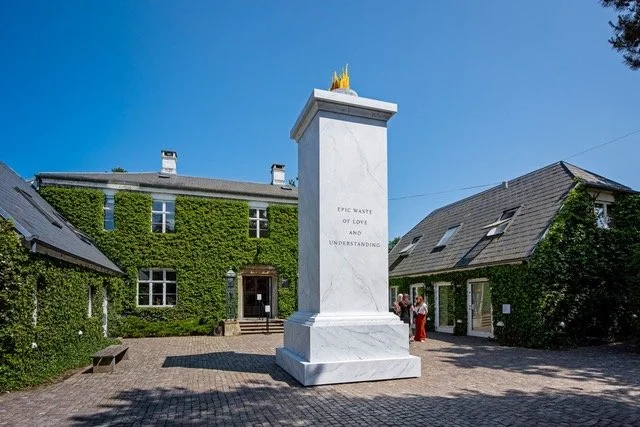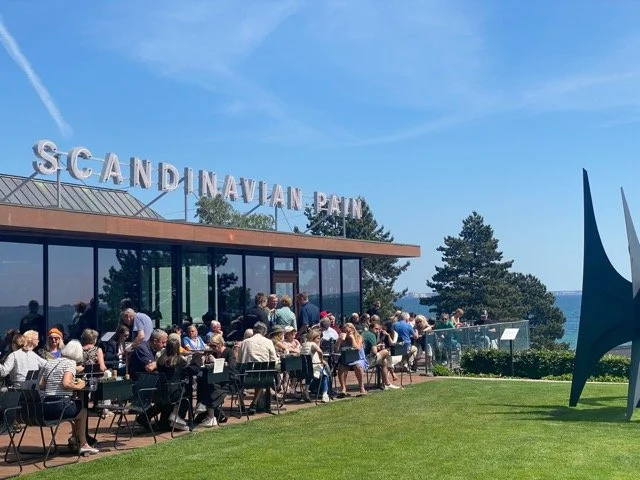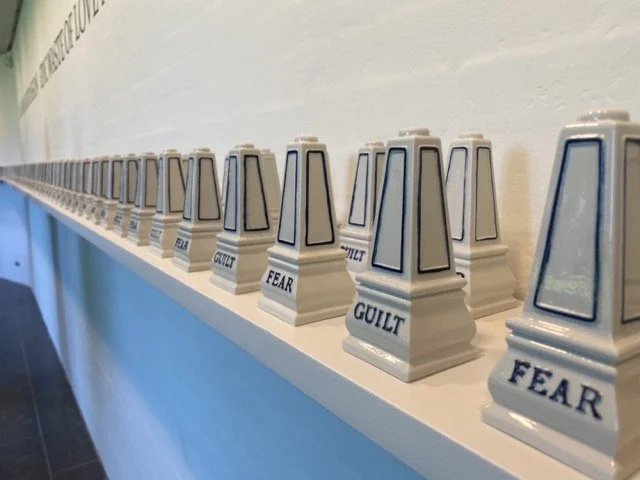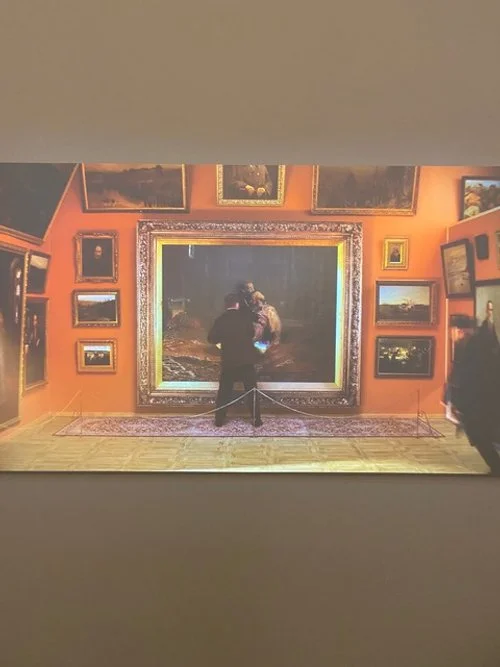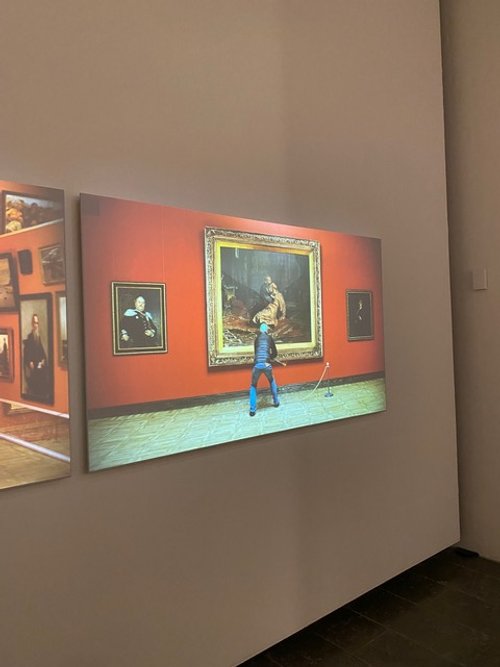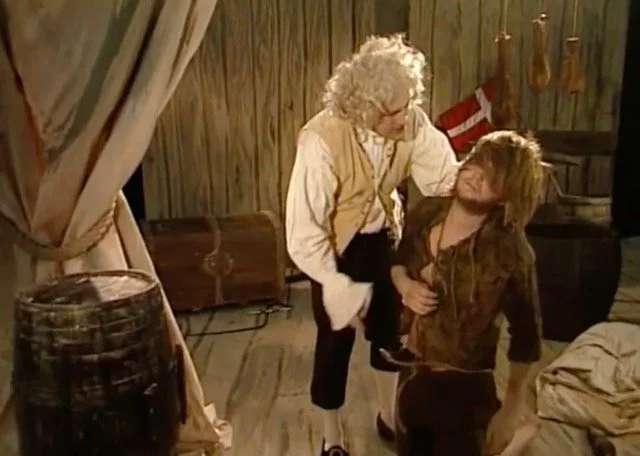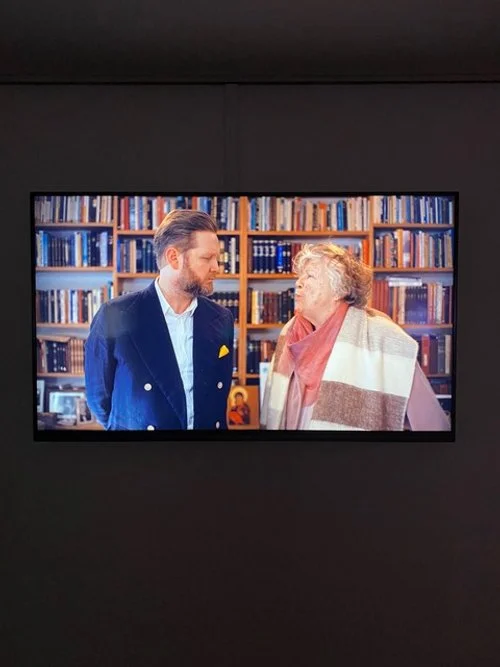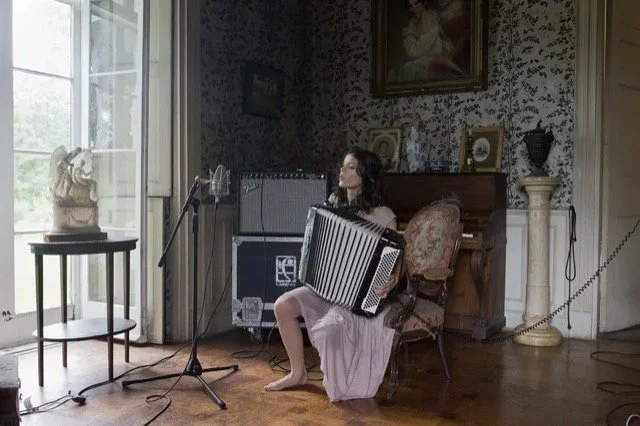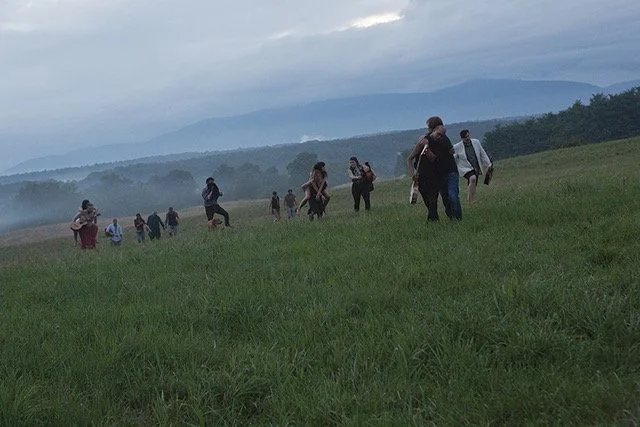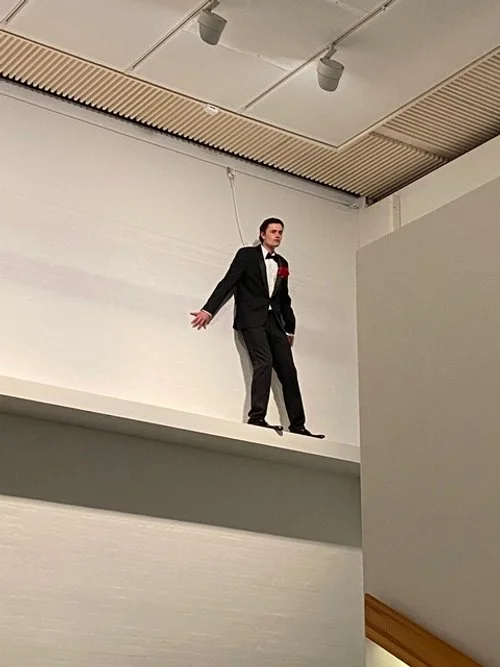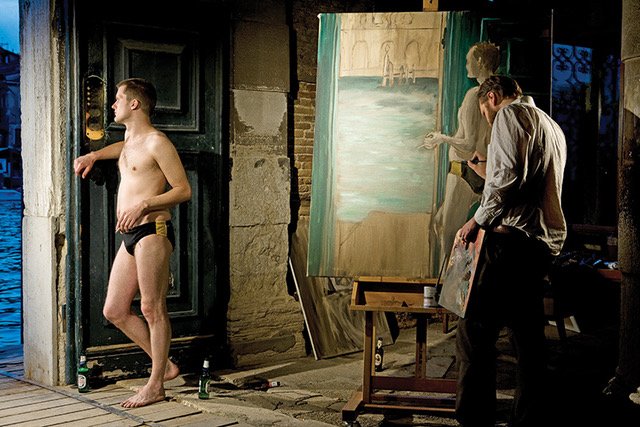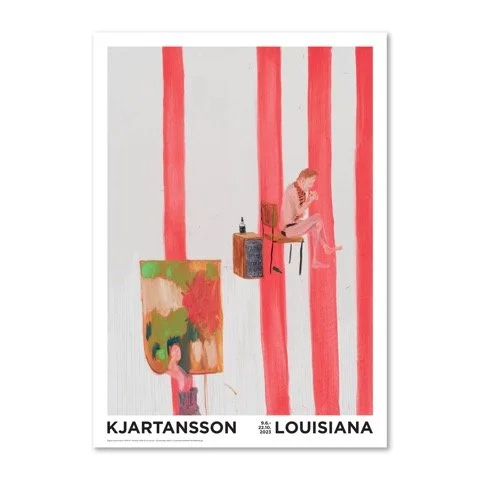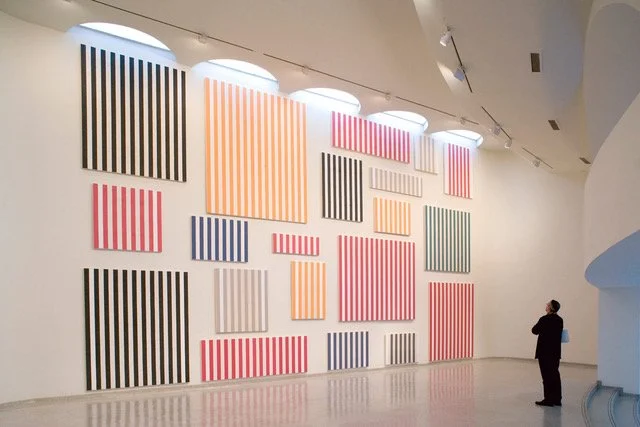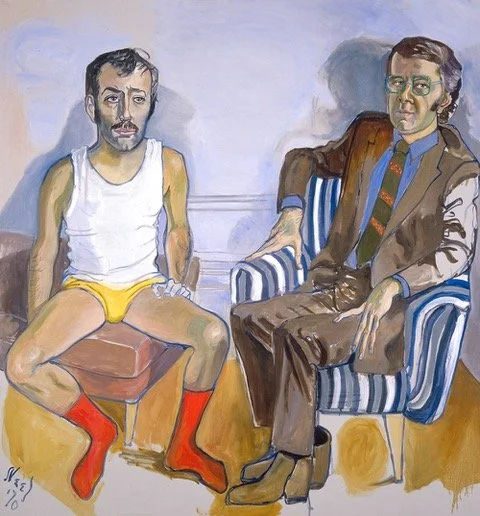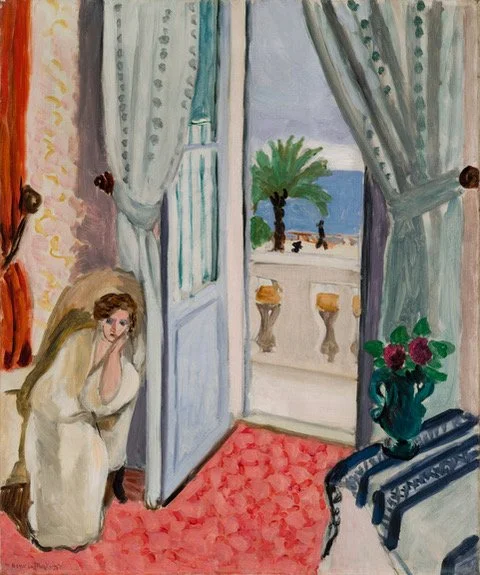Epic Waste of Love And Understanding
Ragnar Kjartansson at the Louisiana Museum of Modern Art, Humblebaek, Denmark, June 2022 - October 2023
When I was at the Louisiana Museum of Modern Art in Denmark a few weeks ago, I had the good luck to see the first retrospective in Scandinavia for the 47 year old Icelandic artist, Ragnar Kjartansson. The exhibition was huge. There were paintings and sculptures and installations, lots of installations. It was varied and informative; amusing and endearing. It was even, at times, shocking..
I am going to call the artist by his first name, Ragnar, because Iceland uses the old Scandinavian naming system. Which works like this: children are named after their fathers. A father’s first name becomes a child’s last name with -son added for a boy and -dóttir for a girl. I’m okay with that. It’s no more patriarchal than our own system in which women have ‘maiden’ and ‘married’ names - passed as we are from father to husband. The old Scandinavian system at least applies to both sons and daughters.
Ragnar, the son of a theater director (father) and actor (mother) was born and still lives in Reykjavik. Before focusing on the visual arts, he was in a rock band that mixed electronic music with punk, R&B and pop. The band was known for its flamboyant live performances. With parents in the performing arts and his own rock band experience, it’s no surprise that performance is a key element in his art.
The exhibition at the Louisiana starts outside, with what looks like a classical marble column. (Figure 1) If we had thought to knock on it, which we didn’t dare, we could have confirmed what we suspected, the column was not marble. I thought maybe plaster, but it was wood. ’Chiseled’ on the column was the title of the exhibition, “Epic Waste of Love and Understanding”. Ragnar’s title isn’t from any classical or literary source but from a fight he had with his wife. At one point she asked if the whole argument wasn’t simply an epic waste of love and understanding.
Figure 1. Radnar Kjartansson, Epic Waste of Love and Understanding, exhibition column, Louisiana Museum, Denmark
Also outside, and this time above the café, are letters which spell out the words, “Scandinavian Pain.” (Figure 2) I’ve been living in France too long because my initial thought was, that’s weird, a billboard advertising Scandinavian bread.
Figure 2. Radnar Kjartansson, Epic Waste of Love and Understanding, Scandinavian Pain, Louisiana Museum, Denmark
Ragnar is an Icelander through and through so, before we check out the exhibition, here’s a (very) brief history of Iceland. Until 1944, Iceland was a dependency of Denmark. Forgetting the really early stuff, from the 13th to the 15th centuries, Iceland was under Norwegian control. Then, Denmark took over. Submission and periodic calls for independence dragged on for the next 400+ years. Iceland gained sovereignty after World War I. But not until the Nazi occupation of Denmark did Iceland dare to declare its independence from its colonial oppressor.
The Nazis, the Russians and the Danes all make appearances in this exhibition as do references to Iceland’s more recent booms and disastrous financial bust of 2008. Through ‘humor, repetition and self-effacement,’ Ragnar takes on world leaders and historical events as well as the banalities of quotidian life.
Along one side the exhibition’s entrance, there is a shelf on top of which dozens of white and blue porcelain containers, sit. On half of these salt and pepper sized containers is the word “Guilt” on the other half, “Fear.” (Figure 3) To the artist, “Guilt and Fear are kind of the essence of everything.” Another Ragnar observation: “Repeat stuff and … it becomes spiritual. That’s what I learned as an altar boy.”
Figure 3. Radnar Kjartansson, Epic Waste of Love and Understanding, Fear & Guilt, Louisiana Museum, Denmark
Let’s start with references to world politics. In one room there is a pile of painted wooden debris. (Figure 4) The piece is called “Hitler’s Loge,” The wood and fabrics were taken from one of the “Führerloges,’ (private theater boxes) in which the Führer sat to watch theatrical performances. What’s interesting here is both what the debris originally was and its subsequent provenance, that is, who owned it after Hitler used it. Before Iceland’s financial collapse in 2008, Icelandic investors were on a buying spree, acquiring properties all over Europe. The Icelandic pop star Helgi Björns, for example, bought a theater in Berlin, which contained a Führerloge. A marble stone explains its history: “I called Helgi Björns. He provided me with Hitler’s loge, Ragnar Kjartansson 2006.” Nazi history and Icelandic history, too.
Figure 4. Radnar Kjartansson, Führerloge, 2006
For the Russians, there’s “Terrible, Terrible,” two video reenactments of two attempts to deface Ilya Repin’s “Ivan the Terrible and His Son Ivan on 16 November 1581.” (Figs 5, 6) Repin painted it shortly after Tzar Alexander II was assassinated in 1881. The painting depicts an event from 300 years earlier when it was the Tzar who was the perpetrator rather than the victim of a violent crime. Ivan the Terrible cradles his dying son after he mortally wounded him in a fit of rage. Ilya Repin, actually a Ukrainian, is said to have conceived the painting as a protest against violence. Which didn’t stop two different men from attacking the painting a century apart. The first time in 1913 which Repin was still alive to repair, the second in 2018. The attacks weren’t random. As the second attacker smashed the glass covering the painting, he shouted that Ivan the Terrible had not killed his son. A viewpoint popular with Russian nationalists. Ragnar’s videos shows the two defacements side by side. First we are peacefully looking at a painting in a gallery. Then all of the sudden we are watching it being defaced. Painting as politics, the defacement of paintings as politics, too.
Figure 5. Radnar Kjartansson, Terrible, Terrible, 2021
Figure 6. Radnar Kjartansson, Terrible, Terrible, 2021
Then there is Iceland’s relationship with Denmark and the video, “Colonization” created in 2003 for a group show Ragnar was invited to participate in, “Iceland and Denmark”. In the video Ragnar plays an Icelandic peasant first being drowned in water and then being beaten with a whip by a Danish noblemen. (Figure 7) Ragnar said he “brought (the video) out of retirement for the Louisiana show…” According to Ragnar, “Iceland’s nationality is … based on being victims of the Danes….” The video is as much slapstick as it is gory, but I still had to look away.
Figure 7. Radnar Kjartansson, ‘Colonization’ 2003
Ragnar said something that will resonate for anyone who grew up in a provincial town. “What I love about being from Iceland,” he said, “is that…you go to the museum here and you just see some Icelandic shit… there is no art history, and there are no objects of mega-value.” The critic to whom Ragnar made that comment contends that it is the key to understanding the artist’s attitude to making art. “On the one hand, there is the … theatrical side of his work, which despite … elaborate stage sets and weeks of rehearsals, (disappears).” On the other, there’s painting, “a discipline he approaches with slapdash enthusiasm.” His pictures may be lovely, but “he seldom places much value on them as physical objects…(T)hey are mementos of durational constraint.”
For Ragnar, to be invited to the capital of the former oppressor to mount a retrospective of his work “was…sort of a dream come true.” It was the same for Ragnar’s mother. At age 87, she was, according to her son, “so overwhelmed with pride that she…abandoned a resolution to stop traveling in order to come to the opening at the Louisiana.”
Even for those of us not at the opening, she is here. A video series entitled “Me and My Mother,” shows Ragnar and his mother alone in a room in front of a bookcase. It is a scene they have repeated every 5 years since 2000. His job is to stand still, her job is to spit on him. (Figs. 8, 9) Sometimes the saliva comes easily, sometimes we see her working hard to get up enough saliva to reach him with her spit.
Figure 8. Radnar Kjartansson, Me & My Mother, 2000+
Figure 9. Radnar Kjartansson, Mother Spitting, 2000+
As the devoted mother of a wonderful son, I was horrified yet fixated by the 5 videos. What was going on here? In 2015, Ragnar’s mother wrote about the piece. When her son first approached her with the idea, she was delighted that he wanted her to participate in a video with him. Then she learned that she would have “to spit on my own beloved son over and over.” Repeating and updating the action every five years, she said, “has become a family tradition.” Although she admitted that “It is trying for a mother and an actress with a 50-year acting career to spit on her own son—the son who has never been anything but a true blessing and has always made her laugh.” According to one critic, the series is “both reality and make-believe…Because his mother is his mother, it’s reality. But because his mother is an actress, it’s a play…”
Another room, another multi-screen installation. Called “The Visitors,’ on each of eight screens a single musician plays an instrument. They are alone yet linked by headphones. One screen shows Ragnar, naked in a bathtub, strumming on a guitar, singing the refrain of a song written by his ex-wife, ‘Once again, I fall into my feminine ways’. Eventually, all of the musicians take off their headphones to meet up in a grand reception room where they share a glass of champagne before they wander out into the countryside. (Figs. 10, 11, 12)
Figure 10. Radnar Kjartansson, The Visitors, 2012
Figure 11. Radnar Kjartansson, The Visitors, 2012
Figure 12. Radnar Kjartansson, The Visitors, 2012
The video was filmed at Rokeby, an historic estate in upstate New York, former home to a passel of Astors, current home to descendants and various artists and writers. The video piece was created in 2012. But Sebastian Smee, art critic for the Washington Post wrote a very moving article about it in July, 2021. To experience the piece, in a museum, with other museum goers, after 18 months of a pandemic, was “a mirror for our current moment,… (it was) breathtakingly prescient.…” As Smee so rightly notes, “To see ‘The Visitors’ as the world begins its tentative and fraught emergence from a still-evolving pandemic is to realize you are in the presence of just such a work. The way Ragnar’s immersive exhibit echoes and distills our gradual, vaccine-assisted transition from prolonged isolation to summertime resumption of social life is uncanny.” https://www.washingtonpost.com/arts-entertainment/interactive/2021/the-visitors-ragnar-kjartansson-oral-history/
There are so many other pieces in this exhibition that I could tell you about (Figures 13, 14) but I will end with the work Ragnar contributed to the 2009 Venice Biennale as Iceland’s representative. In the middle of Iceland’s worst fiscal crisis. Rather than spend a feverish year making art that would have to be shipped to Venice at potentially enormous expense, Ragnar decided to do it on the cheap. Just him, his model and some inexpensive art supplies. No luxury here except the luxury of time. Working on the ground floor of a crumbling palazzo on the Grand Canal, he created, “The End - Venezia”. (Figs 15, 16, 17) With the public invited to watch him work, he painted one portrait every day of his Speedo clad friend, the performance artist, Pall Haukur Bjornsson. As the months passed, all 4 1/2 of them, and the days went by, all 144 of them, beer bottles and cigarette butts accumulated. Once it was over, Bjornsson reminisced about the canal flooding and paintings falling off the wall and floating around in the filthy water. Ragnar explained the project, “I love the idea that when you’re doing it, you have to get it done – it’s like cleaning a room.’
Figure 13. Radnar Kjartansson, Epic Waste of Love and Understanding, Scaredman, Louisiana Museum, Denmark
Figure 14. Radnar Kjartansson, No Tomorrow, 2017
Figure 15. Radnar Kjartansson, The End, Venice Biennale, 2009. Artist & his model (looking to Grand Canal)
Figure 16. Radnar Kjartansson, The End, Venice Biennale, 2009. Artist & his model (wearing shoes, scarf & gloves)
Figure 17. Radnar Kjartansson, The End, Venice Biennale, 2009. Artist & his model (standing at cistern)
The 144 canvases are not identical. Bjornsson doesn’t just sit there - he smokes or reads or drinks or strums on a guitar. With the Grand Canal beyond or seated at a cistern. As the weather changed and the seasons passed, he augmented his Speedo - with boots when it rained, with a scarf when it cooled. Roberta Smith, writing for the New York Times, detected Daniel Buren, the stripes guy (Figs 18, 19) as well as Alice Neel and Alex Katz as inspirations (Figs 20, 21) I detected Matisse (Figs 22, 23). Influences aplenty, but the brilliant conceit is this artist’s own. If you don’t know Ragnar Kjartansson, look out for him. Don’t be put off by what you don’t understand. Give it a chance and your time will be justified. I guarantee it!
Figure 18. Radnar Kjartansson, The End, Venice Biennale, 2009.
Figure 19. Daniel Buren
Figure 20. Alice Neel, double portrait, 1970
Figure 21. Alex Katz, 1960
Figure 22. Radnar Kjartansson, The End, Venice Biennale, 2009.
Figure 23. Henri Matisse, Interior at Nice
Copyright © 2023 Beverly Held, Ph.D. All rights reserved
Dear Reader, I hope you enjoyed reading this article. Please sign up below to receive more articles plus other original content from me, Dr. B. Merci!
And, if you enjoyed reading this review, please consider writing a comment. Thank you.

